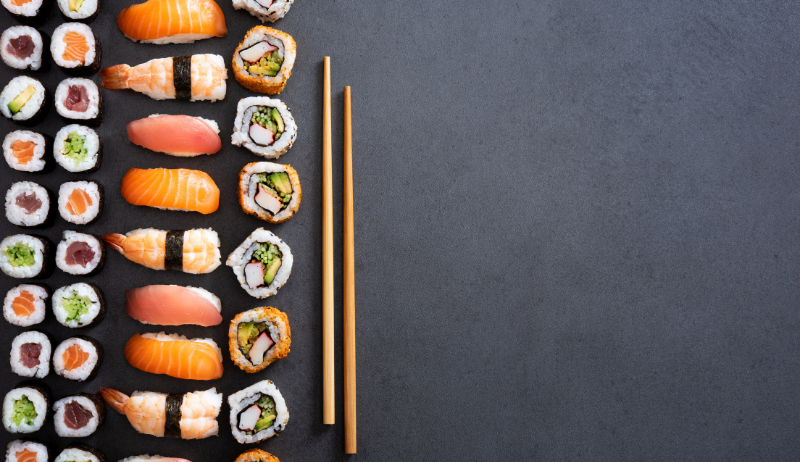The Hidden Journey of Your Sushi: How Indonesian Fishermen Feed the World Tuna Obsession
January 18, 2025

The Hidden Journey of Your Sushi: How Indonesian Fishermen Feed the World Tuna Obsession
That pristine slice of yellowfin tuna on your plate has a story that spans oceans, crosses continents, and connects thousands of lives. From the warm waters of Indonesia to your favorite sushi restaurant, here’s the untold tale of how this prized fish makes its remarkable journey.
The 4 AM Warriors of the Indian Ocean
Long before dawn breaks, Indonesian fishermen from regions like Bali, Sulawesi, and Lombok head out to sea. Armed with generations of knowledge and a deep respect for the ocean, they navigate vast waters in search of yellowfin tuna – a prized fish renowned for its speed, size, and exquisite flavor.
"My father taught me to read the ocean like a book," shares Pak Wayan, a third-generation fisherman from Benoa, Bali. "The birds, the waves, the color of the water – they all tell us where the yellowfin are running."
Their efforts are no small feat. Yellowfin tuna, capable of reaching speeds of 75 km/h and growing to over 200 kilograms, present a formidable challenge. Yet, these fishermen rely on traditional methods and modern equipment to secure their golden catch.
From Ocean to Ice: The Race Against Time
Once a yellowfin tuna is caught, the clock starts ticking. The fish’s quality – and market value – depends on its journey from ocean to table being meticulously managed. To preserve its ruby-red flesh and delicate texture, the tuna is flash-frozen at sea to a temperature of -60°C (-76°F) mere minutes after capture.
This rapid freezing process locks in freshness, ensuring that the tuna retains its flavor and color when it reaches high-end restaurants worldwide.
The Digital Revolution in Tuna Trade
Gone are the days of shouting auctioneers in bustling fish markets. Today, the Indonesian tuna trade is powered by technology. Fishermen upload catch data through satellite systems while still at sea, allowing buyers from Tokyo, New York, and beyond to bid in real-time via digital platforms.
This technological shift not only streamlines the trade but also provides transparency, traceability, and fairer prices for fishing communities.
The Numbers Behind the Tuna Trade
Yellowfin tuna’s global journey is a marvel of logistics and economics:
- A single high-quality yellowfin tuna can sell for up to $40 per pound.
- Indonesia exports over 200,000 tons of tuna annually, making it one of the world’s largest tuna suppliers.
- One yellowfin tuna can travel through six different countries before reaching its final destination.
- The global tuna trade is worth over $42 billion annually.
Sustainability: Balancing Demand and Conservation
The increasing global appetite for yellowfin tuna comes with environmental challenges. Overfishing and habitat destruction threaten tuna populations worldwide. Recognizing these risks, Indonesian fishing communities are pioneering sustainable practices, blending traditional wisdom with scientific innovation.
"We don’t just fish for today," explains Dr. Sari Wijaya, a marine conservation expert in Jakarta. "We’re developing methods that ensure our children’s children will still find tuna in these waters."
From adopting size limits and seasonal fishing bans to utilizing eco-friendly gear, these communities are leading the charge in marine conservation.
From Sea to Plate: The Final Journey
After being processed in state-of-the-art Indonesian facilities, the tuna embarks on a multi-modal journey involving boats, planes, and trucks. Temperature-controlled containers maintain the fish’s pristine condition until it reaches its final destination – whether it’s a Michelin-starred restaurant in Paris or a sushi bar in Los Angeles.
Each step in this intricate supply chain reflects the dedication and expertise of those involved, ensuring that consumers receive the highest-quality product.
Why This Journey Matters
This isn’t just about fish – it’s a story of globalization, resilience, and adaptation. Indonesia’s yellowfin tuna industry exemplifies how local traditions can intersect with modern technology to feed a global demand while supporting livelihoods and promoting sustainability.
The Future of Tuna
As the world increasingly prioritizes sustainable seafood, Indonesia’s tuna trade stands at a critical juncture. Advances in tracking technology, fair trade certification, and eco-friendly fishing techniques are reshaping how this valuable fish reaches global markets.
"The question isn’t just about catching more tuna," says marine economist Dr. Richard Tan. "It’s about finding a balance between economic growth and environmental responsibility."
For Indonesia’s fishing communities, the stakes are high. Yet, their innovative spirit and commitment to sustainability offer hope that yellowfin tuna will remain a symbol of both culinary excellence and ecological harmony.
A Story Worth Tasting
The next time you savor a slice of yellowfin tuna, remember: you’re not just enjoying a meal. You’re experiencing the culmination of an extraordinary journey that connects Indonesia’s warm waters to tables around the world, sustaining thousands of lives in the process.

 English
English Chinese
Chinese